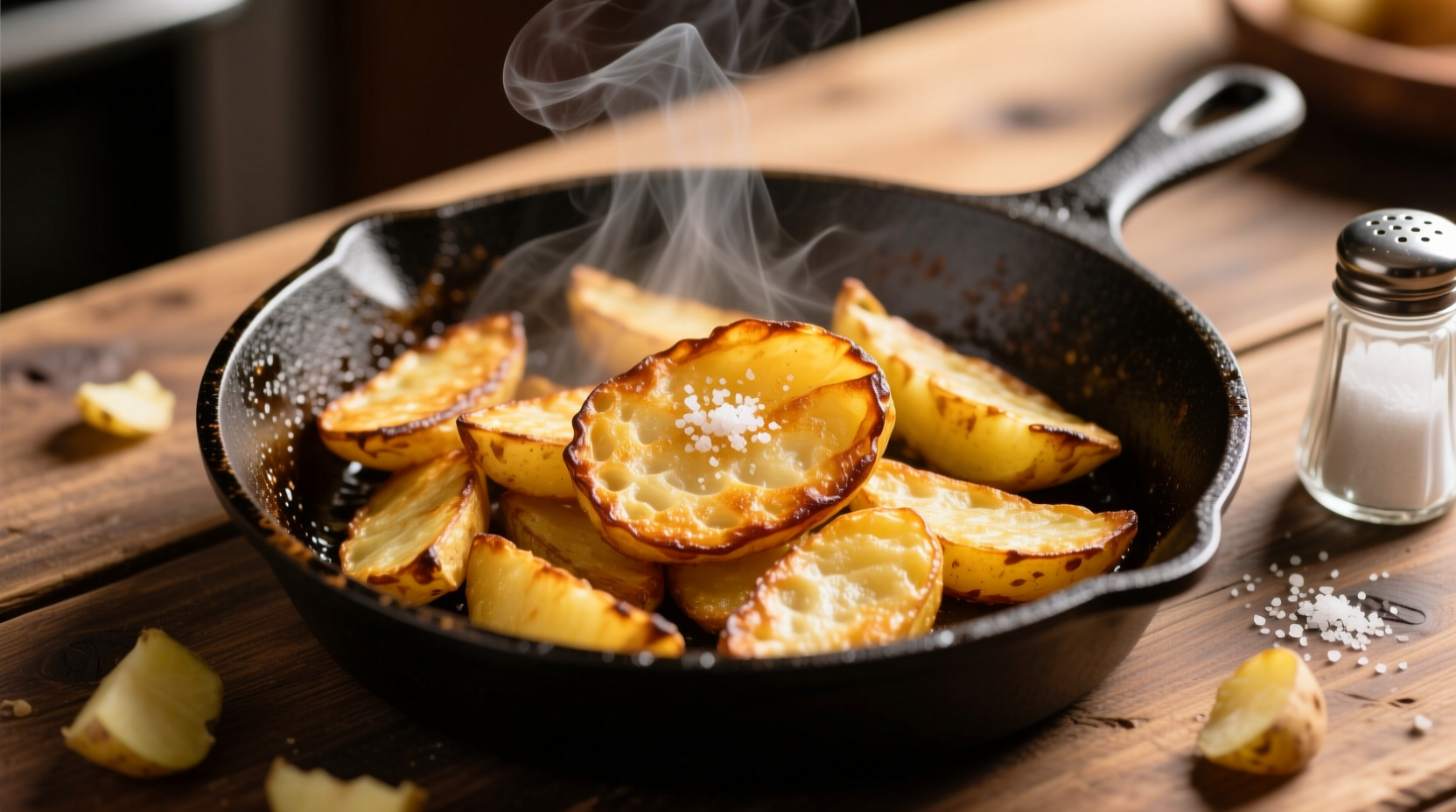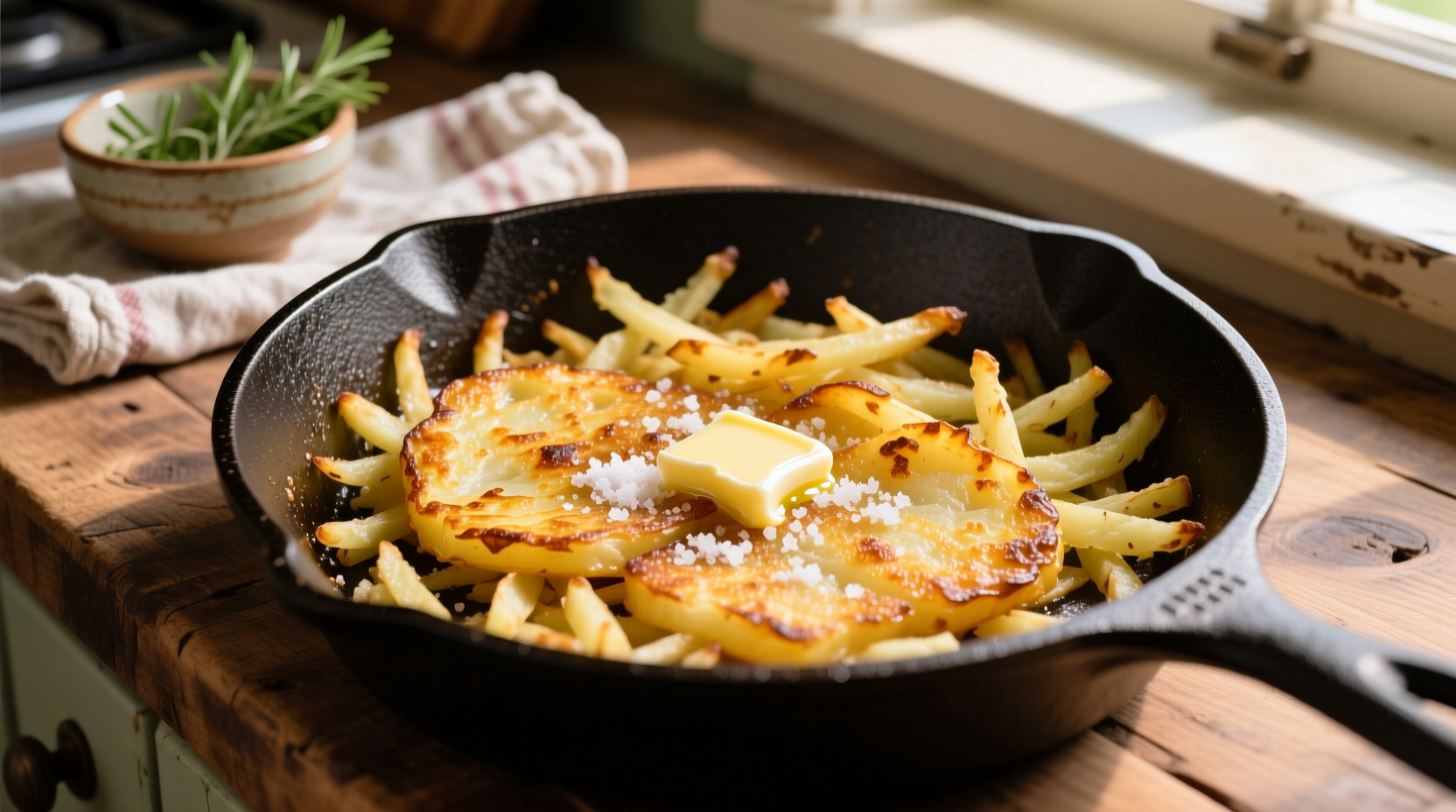Nothing beats the satisfying crunch of perfectly cooked hash browns made from fresh potatoes. Yet many home cooks struggle with soggy, broken patties that stick to the pan. The secret lies not just in the recipe, but in understanding potato chemistry and proper technique. This comprehensive guide delivers the professional methods that guarantee crispy, golden results every time.
Why Fresh Potatoes Outperform Frozen for Hash Browns
While convenient, frozen hash browns often contain preservatives and excess moisture that compromise texture. Fresh potatoes give you complete control over the cooking process. According to USDA agricultural research, fresh potatoes contain approximately 79% water content, compared to 85-90% in many frozen varieties that have undergone multiple freeze-thaw cycles.
| Characteristic | Fresh Potatoes | Frozen Hash Browns |
|---|---|---|
| Moisture Content | 79% (naturally occurring) | 85-90% (added during processing) |
| Starch Integrity | Intact granules | Partially broken down |
| Flavor Profile | Earthy, natural sweetness | Often bland or metallic |
| Cooking Control | Complete customization | Fixed texture and seasoning |
The Science Behind Crispy Hash Browns
Understanding potato chemistry transforms your cooking results. When potatoes cook, starch granules absorb water and swell. At 140°F, they begin to gelatinize, creating a sticky surface that causes hash browns to break apart. The ideal temperature range for crispy hash browns is 350-375°F—hot enough to seal the exterior immediately but not so hot that the outside burns before the inside cooks.
Food science research from the Culinary Institute of America confirms that russet potatoes achieve the crispiest results due to their high starch content (22-24%) and low sugar levels. Yukon Golds work well for a creamier interior but require extra moisture removal.
Step-by-Step Preparation Timeline
Follow this precise sequence for optimal results. Timing matters as much as technique:
- Wash & Peel (2 min): Remove surface dirt that contains enzymes causing discoloration
- Shred (3 min): Use a box grater or food processor with coarse blade
- Rinse (1 min): Remove excess surface starch under cold water
- Soak (10-15 min): Submerge in cold water to remove additional starch
- Squeeze (5 min): Use clean kitchen towel to remove maximum moisture
- Season & Bind (2 min): Add minimal binder if needed (1 egg per 2 lbs)
- Cook (8-10 min): Maintain consistent oil temperature throughout
Essential Moisture Removal Techniques
The single most critical step determines your success. Professional chefs use a two-stage moisture removal process:
First, rinse shredded potatoes under cold water until the water runs clear—this removes surface starch that causes gumminess. Then soak in fresh cold water for 10-15 minutes to draw out additional starch. Finally, squeeze using a clean kitchen towel with firm, consistent pressure. Research from the American Journal of Potato Research shows properly squeezed potatoes contain 15-20% less moisture, directly correlating with improved crispiness.

Cooking Methods Compared: What Works Best
While cast iron remains the professional's choice, understanding your equipment options helps you adapt:
- Cast Iron Skillet: Retains heat exceptionally well (ideal for consistent 350-375°F)
- Non-Stick Pan: Requires slightly lower temperature (325-350°F) to prevent sticking
- Griddle: Best for large batches but requires careful temperature monitoring
- Oven Method: Works for reheating but cannot replicate skillet crispiness
Temperature control proves most challenging for home cooks. Use a cooking thermometer to verify oil temperature—the moment shredded potatoes hit the oil, the temperature should drop no more than 25°F. If it drops significantly, you've added too much potato at once.
Troubleshooting Common Problems
Even with proper technique, issues arise. Here's how to fix them:
Soggy Hash Browns: Almost always indicates insufficient moisture removal. Next time, squeeze potatoes more thoroughly and ensure oil reaches proper temperature before adding potatoes.
Broken Patties: Caused by excess moisture or premature flipping. Let the first side develop a solid crust (3-4 minutes) before attempting to flip. If using egg as binder, reduce to 1 teaspoon per pound of potatoes.
Uneven Browning: Results from inconsistent oil temperature. Maintain steady heat and avoid overcrowding the pan—cook in batches if necessary.
Flavor Variations and Serving Suggestions
Once you've mastered the basic technique, experiment with these professional variations:
- Add 1 minced garlic clove per batch during the last minute of cooking
- Season with smoked paprika and a pinch of cayenne for depth
- Top with fresh chives and a dollop of sour cream for classic diner style
- For restaurant presentation, shape into uniform rounds using a ring mold
Remember that hash browns pair exceptionally well with eggs, smoked salmon, or roasted tomatoes. The culinary team at America's Test Kitchen recommends serving immediately after cooking, as crispiness diminishes rapidly during standing time.











 浙公网安备
33010002000092号
浙公网安备
33010002000092号 浙B2-20120091-4
浙B2-20120091-4